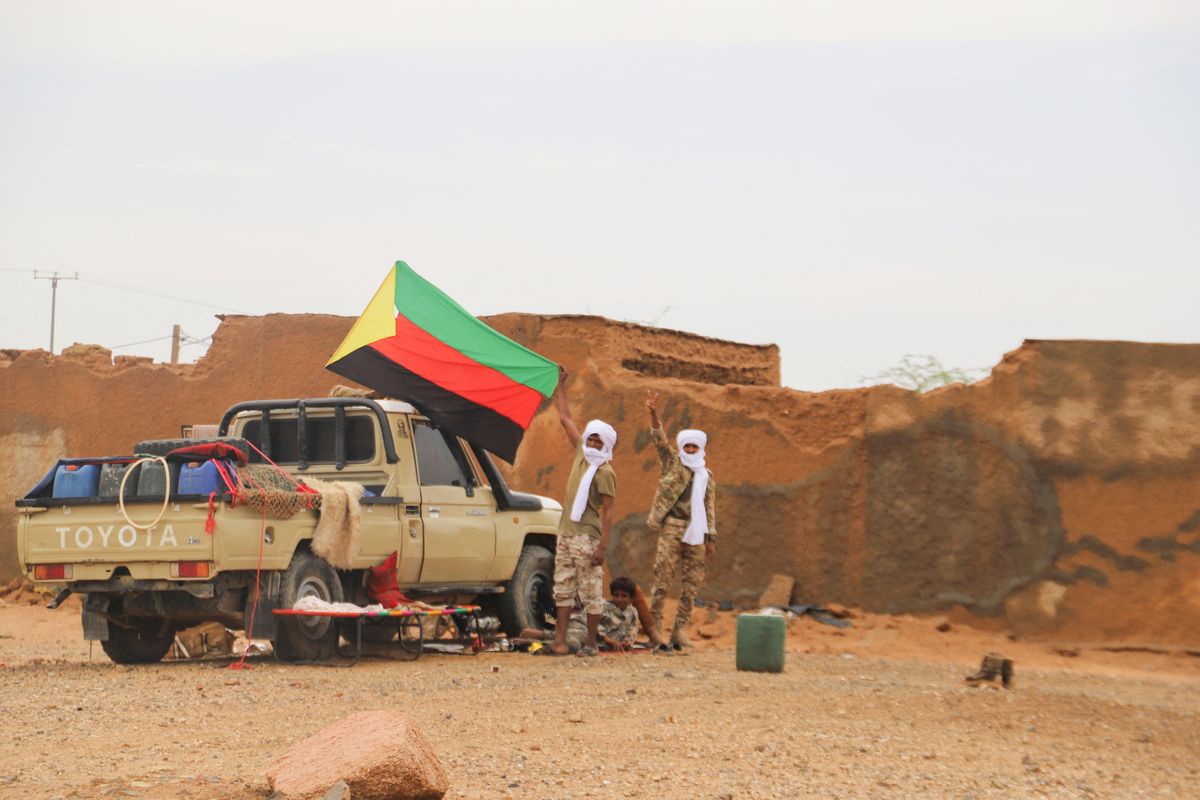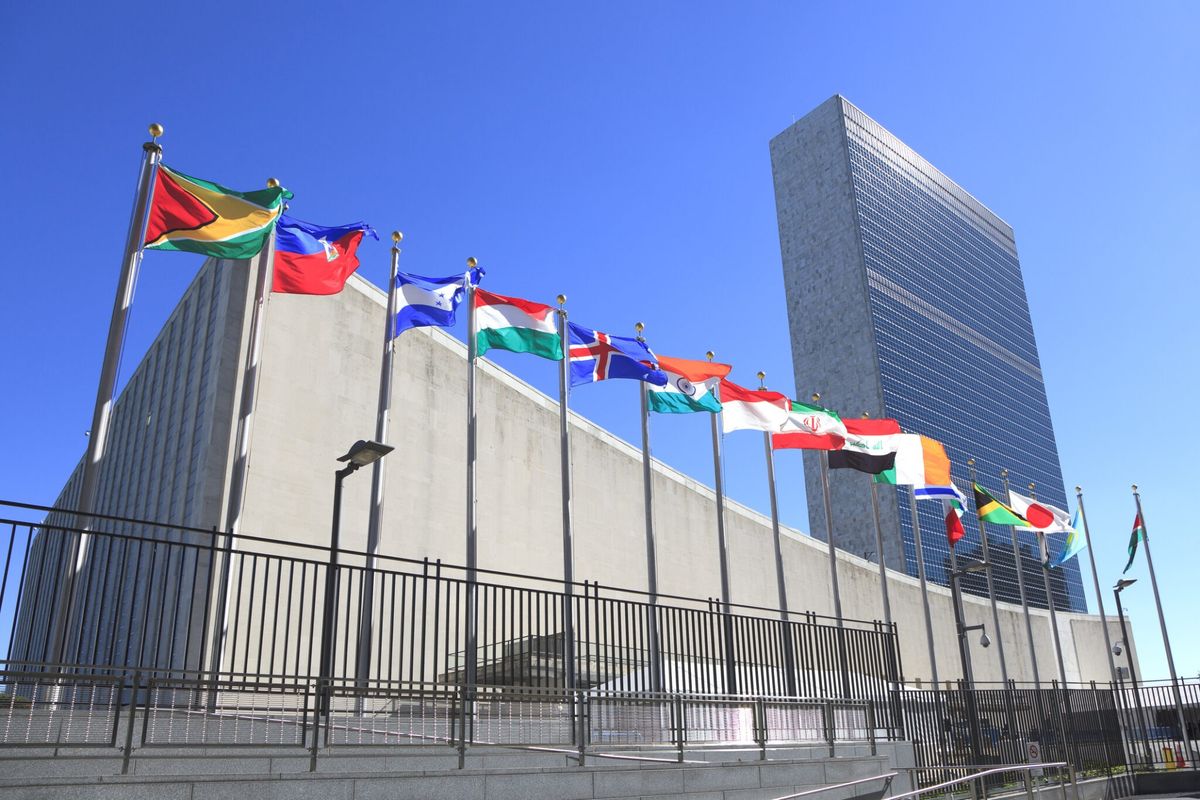The Trump Administration has proposed a 28 percent cut to State Department funding and other international programs in order to help pay for an increase of $54 billion to military spending next year. The Cipher Brief’s Kaitlin Lavinder spoke with J. J. Messner, the Executive Director of the Fund for Peace, about the benefits of diplomacy and foreign aid and why foreign aid spending versus military spending is not a zero-sum game.
The Cipher Brief: What are the benefits of foreign aid and international development?
J. J. Messner: One of the problems in the debate about the effectiveness of foreign aid and international development has been this tendency to look at it as if it were charity, that the United States – or any other donor – is simply providing charity to countries. In actuality, international development succeeds at doing a number of things.
First of all, foreign aid raises the level of development in other countries and also increases the level of stability in other countries. From a purely charitable point of view, one could say that is obviously good for those countries. But even from a specifically American point of view, it’s very good for America. If you look at it from a purely business perspective, what is in it for America is that if you are developing other countries, then that is creating a new market for trade and commerce with America. If we are to look at these things through the lens of developing American business and putting America first, then surely developing future markets for American goods is a good thing.
In terms of it being a vehicle for creating more stable operating environments, let’s not forget that American companies don’t just operate in America. They operate in probably every country in the world. And one of the biggest costs and biggest risks of doing business, particularly in developing countries, is conflict or instability. So if you are, through international development and foreign aid, able to create more conducive environments in which to conduct business, then that is not only good for the local economy, but it’s also good for American businesses that operate in those environments as well. If you look at the manner in which many American companies conduct corporate social responsibility, in terms of contributing to the development of local communities or even in some examples trying to create a more stable environment, that really speaks to the fact that American business recognizes the need for stability before there can be true prosperity.
But even if we don’t look at it through a purely commercial lens, we need to understand where international development sits in the spectrum of defense spending. If we get to a point where we need to defend our country in a kinetic kind of way, where we need to use the military to protect America, it already suggests that the threat is emanating from a source where social and economic breakdown has occurred. The role of international development and public diplomacy is to diffuse and prevent that social and economic breakdown in the first place, so hopefully those sources of risk won’t actually become a risk to America. If we can address those social and economic issues at their source, it’s really nipping problems in the bud and hopefully preventing the need for higher levels of defense. So I think recognizing that public diplomacy and international development and foreign aid really sit in a spectrum, rather than compete with defense spending, is an important way of looking at the funding calculus.
Beyond that, it’s also worth bearing in mind just how little money is actually spent on foreign aid and international development. Opponents of foreign aid and international development tend to – consciously or not – grossly inflate the amount of money that is spent on international development and foreign aid, when in actuality it is a tiny percentage of the U.S. budget. But even then, recognizing that it is a tiny percentage of the U.S. budget, let’s consider who that money is actually being spent on. Much of that money is going to benefit Americans. Much of that money is being spent on the development sector of American firms, American professionals, who work not only in American interests but in the interest of developing societies.
And beyond the development sector, much of the money goes to nonprofit NGOs that work with very little resources to bring about social and economic development. So from that perspective, even recognizing the comparatively miniscule part of the budget that is spent on international development and diplomacy, much of that money goes back to America anyway.
TCB: A number of people inside the beltway understand the benefits you just outlined. For example, last month, more than 120 former military leaders signed a letter to the Trump Administration, saying foreign aid is needed in tandem with military development. Do you think these voices are going to be heard in the coming months as the budget is debated?
JM: It’s certainly my hope they will be, but it’s my fear they’ll be drowned out by more nativist, America first rhetoric. This is not a zero-sum game. Many of us want the same things. We want security, we want stability. But what this really comes down to is an argument over the recommended course of achieving those goals, and when you have so many in the military community and intelligence community who are coming out and speaking out on behalf of diplomacy and international development, I think that speaks volumes to the fact that the military community recognizes they work hand in glove with international development. In many ways, successful international development and public diplomacy make their lives easier and reduce the risks defense has to tackle. That, more than anything, is evidence of the need for public diplomacy and international development to work alongside defense. But, again, as we seem to be resorting more to soundbites, I think there is a legitimate fear those arguments will be lost.
TCB: Looking at an organization like the United Nations, which is in the business of providing foreign aid and international development, how would the proposed cuts impact that organization and other multilateral institutions like the World Bank, IMF?
JM: As far as the UN is concerned, much of the focus is frequently on the amount of money that is spent on the United Nations or perhaps the more diplomatic angles of the UN. But what is often lost in this conversation is the recognition that so much of the funding to the UN goes to UN organs such as UNICEF, which looks after the interests of children and has many projects around the world focused on the health and education of children. There are also many UN programs that are focused on women, on human rights in general, on many aspects of society that are being helped by these implementation projects. Whereas I think much of the perception of the UN is somewhat different and perhaps more narrowly defined.
When it comes to institutions like the World Bank and IMF, I think it’s equally important to look at what these organizations have achieved over the years. Though no institution is perfect, I think that any sober, objective analysis is going to determine that these institutions do bring an enormous amount of good. Again, it gets back to this issue of stability and reducing risks and reducing threats. The UN and its various departments and sister agencies have really succeeded in reducing much of the risk.
This really gets down to the adage of the dog that didn’t bark. It’s very difficult to prove when conflict doesn’t happen. But I suspect the UN and its various agencies have been responsible at various times in its history for preventing or mitigating much of the conflict that we seem concerned with when it comes to increased defense spending.
TCB: Is the U.S. spending more now on these institutions and on the State Department than it has in the past? I ask this because Secretary of State Rex Tillerson made a comment that the cuts are necessary to correct a “historically high” budget for the State Department. Is that accurate, and, if so, why has U.S. spending increased?
JM: I can’t speak to whether those comments are an accurate representation of where spending on the State Department has been. Although I think it is worth recognizing that for a department as vast and far-reaching as the State Department, there are many costs associated with that. A large cost for the State Department is security and making sure that our diplomats and representatives overseas are kept safe. The example of the attack on the consulate in Benghazi underlines a determination that the U.S. does want to do all it can to keep its diplomats safe. So security is a large part of that.
But ultimately the State Department is charged with doing an awful lot of things, and to that extent, it would not be surprising that the level of funding for State may have increased over the years, and there are clear and justifiable reasons as to why that may have happened.
We do need to keep that in context, that the level of funding provided to the State Department absolutely pales in comparison to funding to other departments and, in particular, the Department of Defense. That’s not to say, again, that this is a zero-sum game. I think the State Department would absolutely advocate for a strong Department of Defense, just as the Department of Defense, I’m sure, would advocate for a strong Department of State.











